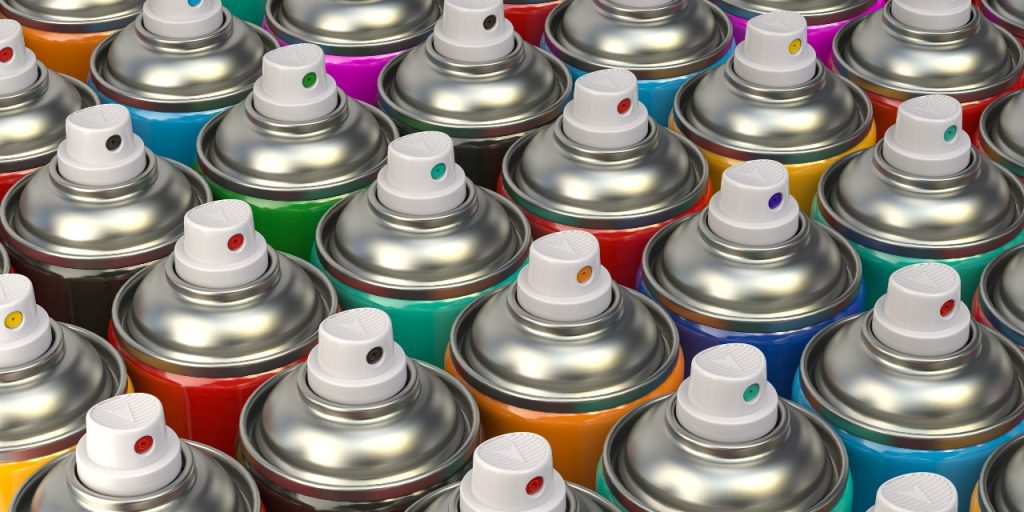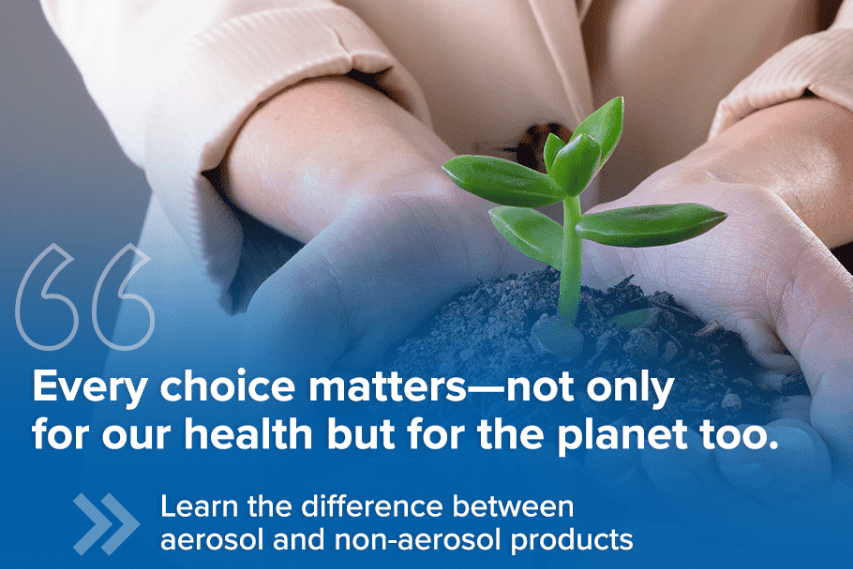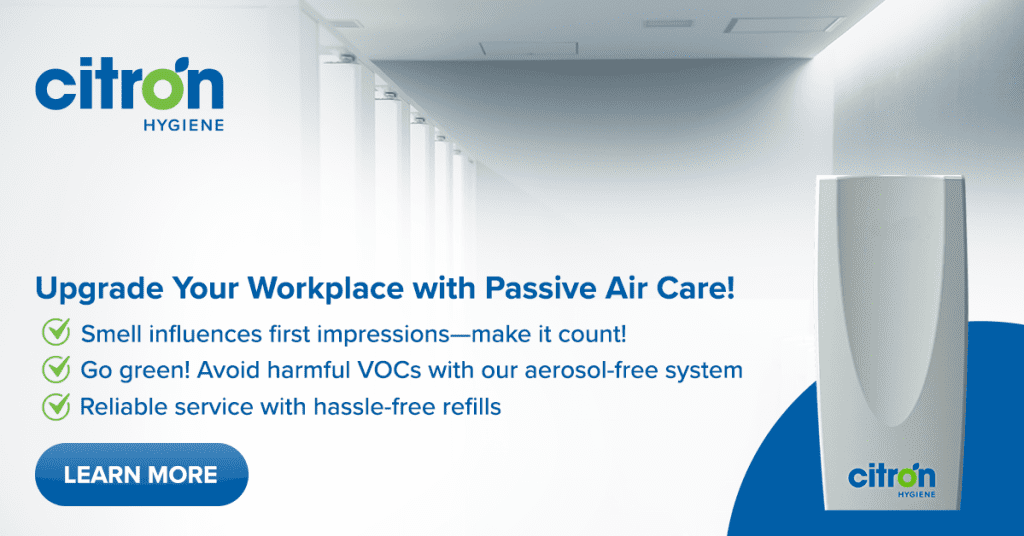In a world where hygiene and cleanliness are paramount, the choice between aerosol and non-aerosol products can significantly impact not only our personal well-being but also the environment. As a hygiene company committed to sustainable practices and the health of our customers, we believe it’s crucial to shed light on the main differences between these two types of products. Join us as we explore the science, types, potential dangers, and the benefits of non-aerosol products vs their aerosol counterparts.
Table of Contents
What are Aerosols?
Aerosols dispense liquid or solid particles into the air as a mist or spray. These products typically contain propellants, such as compressed gases, to propel the active ingredients out of the canister. Aerosols are commonly found in several cleaning and hygiene products, including air fresheners, disinfectants, and cleaners.
The Science Behind Aerosols
The key component of aerosol products is the propellant, which helps to create the fine mist or spray. These propellants often include volatile organic compounds (VOCs) like propane, butane, or isobutene. When released into the air, VOCs can contribute to indoor air pollution and have been linked to respiratory issues and other health problems.
Common Aerosol Cleaning & Air Care Products
- Air Fresheners: Used to mask odours and create a pleasant scent in indoor spaces.
- Disinfectant Sprays: Commonly used to sanitise surfaces, particularly in healthcare settings.
- Cleaning Sprays: Include products for glass, surfaces, and appliances, offering convenience in application.
While these products offer convenience and quick application, the propellants and chemicals they contain raise concerns over indoor air quality and potential health risks.
What are Non-Aerosol Alternatives?
Non-aerosol products, on the other hand, provide an alternative method of dispensing hygiene, air care and cleaning solutions without the need for propellants. These products come in various forms, such as liquids, gels, wipes, and concentrates.
Types of Non-Aerosol Cleaning & Air Care Products
- Liquid Cleaners: Versatile cleaners for various surfaces, typically applied with a cloth or mop.
- Gel Sanitisers: Hand sanitisers in gel form, convenient for on-the-go use.
- Wipes: Pre-moistened wipes for quick and easy cleaning without the need for sprays.
- Non-Aerosol Air Fresheners: Uses the power of natural air flow and essential oils for effective and eco-friendly air freshening.
Non-aerosol products are formulated without propellants, reducing the risk of indoor air pollution and minimising exposure to harmful chemicals.
Are Aerosol Products Toxic to Humans?
Aerosol products can indeed pose health risks due to their chemical composition. The propellants and VOCs found in aerosols can contribute to respiratory irritation, headaches, and other health issues, especially with prolonged exposure. Additionally, when these products are used in enclosed spaces without proper ventilation, they can lead to poor indoor air quality.


Are Aerosols Bad for the Environment?
Studies have also shown that some aerosol ingredients can have detrimental effects on the environment. For instance, certain propellants contribute to ozone depletion and are considered greenhouse gases.
Ozone Depletion
Certain aerosol propellants, such as chlorofluorocarbons (CFCs) and hydrochlorofluorocarbons (HCFCs), have been identified as ozone-depleting substances. When released into the atmosphere, these compounds can reach the stratosphere, where they break down ozone molecules. Ozone depletion leads to the thinning of the ozone layer, which plays a crucial role in shielding the Earth from harmful ultraviolet (UV) radiation. This thinning can result in increased UV exposure, posing risks to human health, ecosystems, and wildlife.
Greenhouse Gases
Additionally, some aerosol propellants are classified as greenhouse gases. These gases can trap heat in the Earth’s atmosphere, contributing to global warming and climate change. When aerosol products are used and disposed of, these greenhouse gases are released into the air, where they accumulate and intensify the greenhouse effect.
The environmental impact of aerosols extends beyond their immediate use. Proper disposal and reduced use of aerosol products can help mitigate their negative effects on the environment. Opting for non-aerosol alternatives can significantly reduce the carbon footprint associated with hygiene and cleaning routines. By making conscious choices, we can work towards a cleaner, healthier planet for future generations.
What are the Benefits of Non-Aerosol Products?
- Healthier Indoor Air Quality: Non-aerosol products eliminate the release of VOCs and propellants, promoting cleaner and safer indoor air.
- Reduced Health Risks: By choosing non-aerosol alternatives, individuals can lower their exposure to potentially harmful chemicals, reducing the risk of respiratory issues and other health problems.
- Environmental Friendliness: Non-aerosol products are often formulated to be biodegradable and eco-friendly, minimising their impact on the environment.
Citron Hygiene’s Promise
At Citron Hygiene, we are committed to providing non-aerosol alternatives that prioritise safety and sustainability. By opting for non-aerosol products, we can create healthier spaces and better indoor air quality for ourselves and future generations. Whether in the workplace or at home, the products we choose have a lasting impact. Let’s choose wisely for a cleaner, healthier, and more sustainable future.
EcoAire by Citron Hygiene
Our EcoAire air care system is designed to provide continuous air fragrance while minimising washroom odours. Unlike traditional aerosol-based products, EcoAire utilises passive technology, harnessing the power of natural air flow for effective and eco-friendly air freshening.
Passive Technology for Continuous Freshness
EcoAire operates on a passive system, meaning it does not rely on aerosols or propellants to disperse fragrance. Instead, our unique design maximises air movement around the refill, ensuring a consistent and pleasant fragrance throughout the space. This approach not only eliminates the need for harmful chemicals but also reduces the carbon footprint associated with aerosol products.
Optimal Air Circulation with Special Slatted Design
At the heart of EcoAire is its special slatted design, carefully engineered to promote optimum air circulation around the refill. This design allows the fragrance to naturally disperse into the surrounding environment, ensuring a long-lasting and subtle scent without the need for artificial aerosols.
Make the Switch: Choose EcoAire from Citron Hygiene
Join us in making a positive impact! Explore our EcoAire continuous air fragrance and create a pleasant washroom environment. Make the switch to a passive, non-aerosol air care system for a safer and greener tomorrow. Contact our team to find out more.

